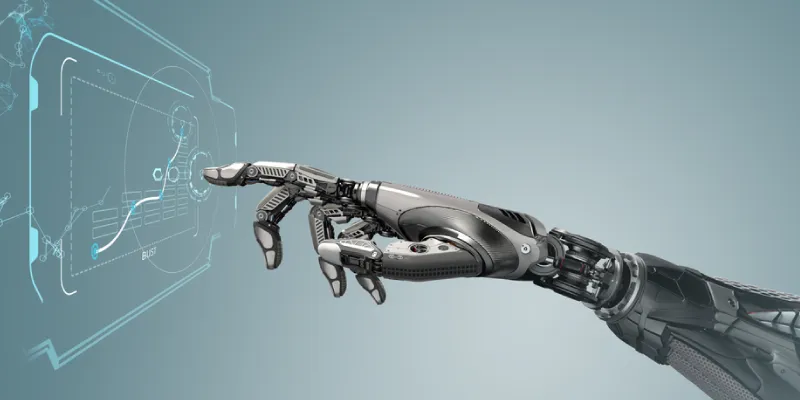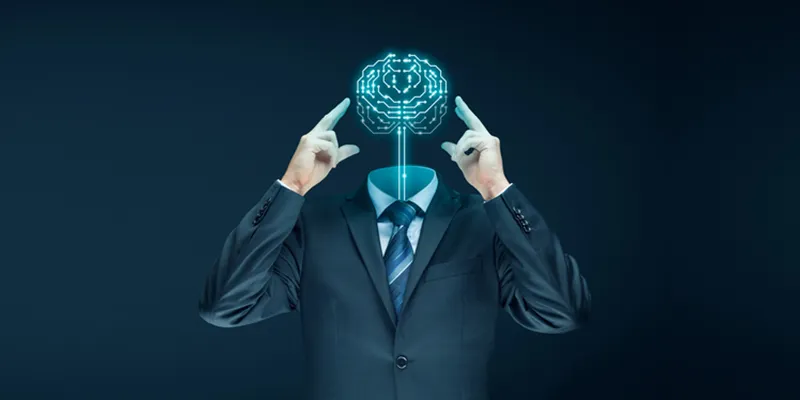How artificial intelligence can benefit India
China is investing $2.1 billion in creating an AI research park. It is time to ensure that we are not left behind in this important skill.

During the 2018 Budget presentation, Finance Minister Arun Jaitley informed that Niti Aayog will initiate national programmes on artificial intelligence (AI). China has already been heavily investing in AI in the past few years. According to Andrew Ng, Professor at Stanford University, AI is the next electricity; it will be the main force behind development like how electricity played a major role in world development during the early 20th century.
The topic ofAI or ‘Thinking Machines’ has been of interest to scientists since the early 20th century, when the first generation of computers was designed. Imitating nature is one of the strategies used by man for solving problems. Nothing can beat the human brain when it comes to problem-solving. The human brain is very complex with more than 10 billion basic computing units called neurons and more than 60 trillion connections between them. Understanding the brain requires understanding the working of its basic computing element neuron and how the neurons interact with each other. Even today, we do not have much of a clue about how the brain works or why it does not work in many of us. So, the first task was to design a mathematical model for the basic computing elements that are present in our brain.
The first breakthrough in creating a mathematical formulation of the basic computing element of a brain (neuron) was provided by Warren McCulloch and Walter Pitts through their seminal paper, A logical calculus of the ideas imminent in nervous activity, in the Bulletin of Mathematical Biophysics in 1943, which laid the foundation for the neural networks.
The first meeting on AI was organised by Professor John McCarthy, teaching Mathematics at the Dartmouth College in 1956 and he coined the term ‘Artificial Intelligence’. The computing power in 1956 was sufficient to perform useful tasks using AI and there were no efficient algorithms.

Another breakthrough in neural network research came in the form of backpropagation algorithm by Werbos in 1974, but found its use in neural networks in the late 80s. Backpropagation algorithm again rekindled the interest in neural network research, but still had a very limited application due to lack of computing power, till recently. Today, we have better computing power that can be exploited to solve problems that matter to the society. There are predictions that we will soon have machines with equivalent human intelligence by 2050, which in my opinion is unlikely. We may have a better understanding of the functioning of the brain by 2050. We will have machines that can remove human weaknesses. We are not good at performing repeated tasks effectively; AI through automation will replace any human activity that is repetitive. Call centres have been already taken over by chatbots and any information services can be easily replaced by bots.
Today, AI is heavily used for automation across several industries. Robots are already taking over jobs that do not require human intelligence. Many manufacturers are using robots to replace tasks such as welding, mining activities, movement of parts within a factory that were previously carried out by humans. The financial industry is seeing a heavy surge in the use of AI and machine learning for investment advisory.
Another domain which is seeing heavy use of AI is healthcare. AI is helping physicians to decide on the best treatment and predict future complications that a patient may encounter. Tasks such as differentiating a cancerous cell from a non-cancerous cell can be easily achieved through AI-based tools.
According to Google CEO Sundar Pichai, AI is more important to humans than fire or electricity. However, it is important to understand that AI is not a one-stop solution to all the problems.
AI has failed in many contexts. Davenport and Ronanki (2018) point out a project started by MD Anderson Cancer Centre called “moon shot”, to diagnose and recommend treatment for certain forms of cancer using IBM Watson’s cognitive system in 2013, which was put on hold after spending $62 million and no tangible output. There is a misconception that techniques such as neural networks are much superior to other machine learning algorithms, which is not true. In my own experience, I found techniques such as random forest outperform neural networks in many data sets.

Countries such as India can benefit a lot from the use of AI by focusing on sectors such as healthcare, agriculture, manufacturing, infrastructure etc. Another area we need to focus upon is the use of AI in defence. Issues such as tax evasion, money laundering etc can be easily addressed using AI. The government will play an important role in encouraging AI research among Indian scientific community. We will have to reskill the current workforce since many skills will become irrelevant in the future. There is a great opportunity for India to excel in AI domain like in the case of IT. China is investing $2.1 billion in creating an AI research park.
It is time to ensure that we are not left behind in this important skill. At IIMB, we are currently developing AI-based models to maximise groundwater recharge and minimise farmer distress etc.
However, as in the case of any technology, AI can be misused. In December 2017, many resellers created AI-based bots to purchase popular Christmas gifts at a lower price from Amazon and Walmart and sold at much higher price using other portals. For example, one of the popular toys, ‘fingerlings’ was purchased at $15 and sold at $60. Customers had to pay $60 since it was not available at the original sellers anymore after the bots had purchased all of them.
Toby Walsh, in his latest book titled, Machines That Think, claims that AI can take many paths, many good and some bad. It is up to the society to decide which path to take.
(Disclaimer: The views and opinions expressed in this article are those of the author and do not necessarily reflect the views of YourStory.)







